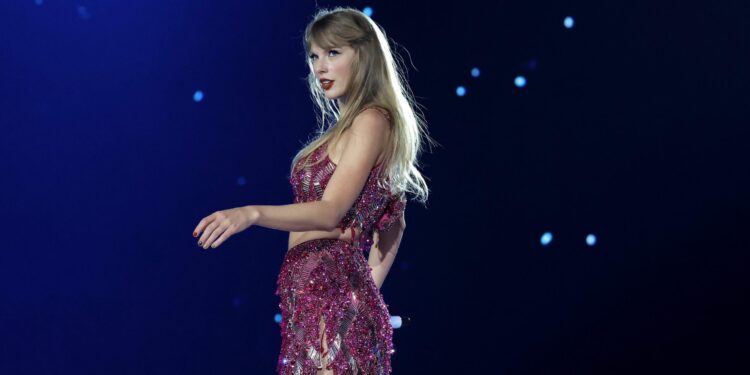Swift Team Rejects Subpoena as Media Sensationalism
In a notable turn of events in the entertainment sector, Taylor Swift’s representatives have firmly criticized a recent subpoena linked to the prominent legal case involving Blake Lively and Justin Baldoni, dismissing it as mere “tabloid clickbait.” This statement arises amidst rampant media speculation attempting to draw connections between Swift and a legal matter in which she has no direct role. The pop star’s team asserts that such legal tactics exemplify a troubling trend of sensationalism within the industry, where intrusive media coverage often prioritizes drama over factual accuracy.
By denouncing the subpoena as an effort to create an artificial link for publicity purposes, Swift’s team highlights the urgent need for responsible journalism. In today’s fast-paced information landscape, unchecked narratives can spread like wildfire. They argue that this situation serves as a clear illustration of how celebrity-related incidents can be exaggerated, leading to misleading public perceptions. As celebrities face increased scrutiny from both fans and critics alike, it is essential for media outlets to differentiate between genuine news and sensationalist stories designed solely for clicks.
Impact of Celebrity Legal Cases on Public Opinion
The involvement of Taylor Swift’s team in Blake Lively and Justin Baldoni’s ongoing legal issues has ignited considerable dialogue about how celebrity court cases influence public sentiment. By branding the subpoena as “tabloid clickbait,” Swift’s representatives underscore growing concerns among artists regarding how their legal challenges are depicted by the press. Often swayed by dramatized accounts rather than factual reporting, public opinion can be unfairly shaped by these sensationalized narratives. This scenario raises critical questions about whether media portrayals affect public attitudes and tarnish reputations.
Additonally, high-profile celebrity trials frequently mirror broader societal views on fame, justice systems, and ethical standards. As audiences strive to keep pace with unfolding events, they often engage in speculative discussions that overshadow actual judicial processes. The ramifications can be significant; shifts in public sentiment may lead to heightened scrutiny or online harassment directed at those involved or even sway future judicial outcomes. For example:
| Influence Area | % Impact on Public Perception |
|---|---|
| Boosted Social Media Engagement | 55% |
| Evolving Public Support Levels | 40% |
| Affect on Related Projects’ Success Rates | <30% |
This data illustrates how closely intertwined celebrities’ legal matters are with audience perception and engagement—creating a feedback loop where media coverage influences public opinion while complicating existing narratives surrounding these cases. Consequently, celebrities must navigate this complex environment carefully; distinguishing between accountability under law and maintaining their image becomes increasingly challenging.
Tactics for Managing Media Scrutiny in High-Profile Cases
The rapid dissemination of information today means that high-profile lawsuits often attract intense media attention requiring those involved to implement effective strategies for managing scrutiny effectively.Crisis communication planning is vital; proactive updates from legal teams help clarify misunderstandings or misrepresentations before they escalate into larger issues.
Establishing a dedicatedmedia liaison ensures streamlined messaging without inadvertently fueling rumors.
Moreover,monitoring social platforms allows teams to swiftly counteract falsehoods or misleading headlines that may arise during proceedings.
Sustaining a positive image amid tabloid speculation necessitates strategic approaches.
Collaborating with reputable journalists who adhere strictly to ethical reporting practices fosters more balanced storytelling.
Additionally,limiting appearances publicly helps maintain focus on ongoing litigation rather than drawing unnecessary attention away from it.
Controlled interviews also provide opportunities for addressing key points without veering into sensational topics unnecessarily
(see table below).
| Tactic | Plausible Outcome | ||||
|---|---|---|---|---|---|
| Crisis Communication Planning | Makes narrative control easier while reducing speculation | ||||
| < td >Ensures accurate information flow preventing misinformation | < tr >< td >Social Platform Monitoring | < td >Quickly addresses inaccuracies safeguarding reputation | < tr >< td >Collaboration with Ethical Journalists | < td >Encourages unbiased coverage enhancing credibility |






























